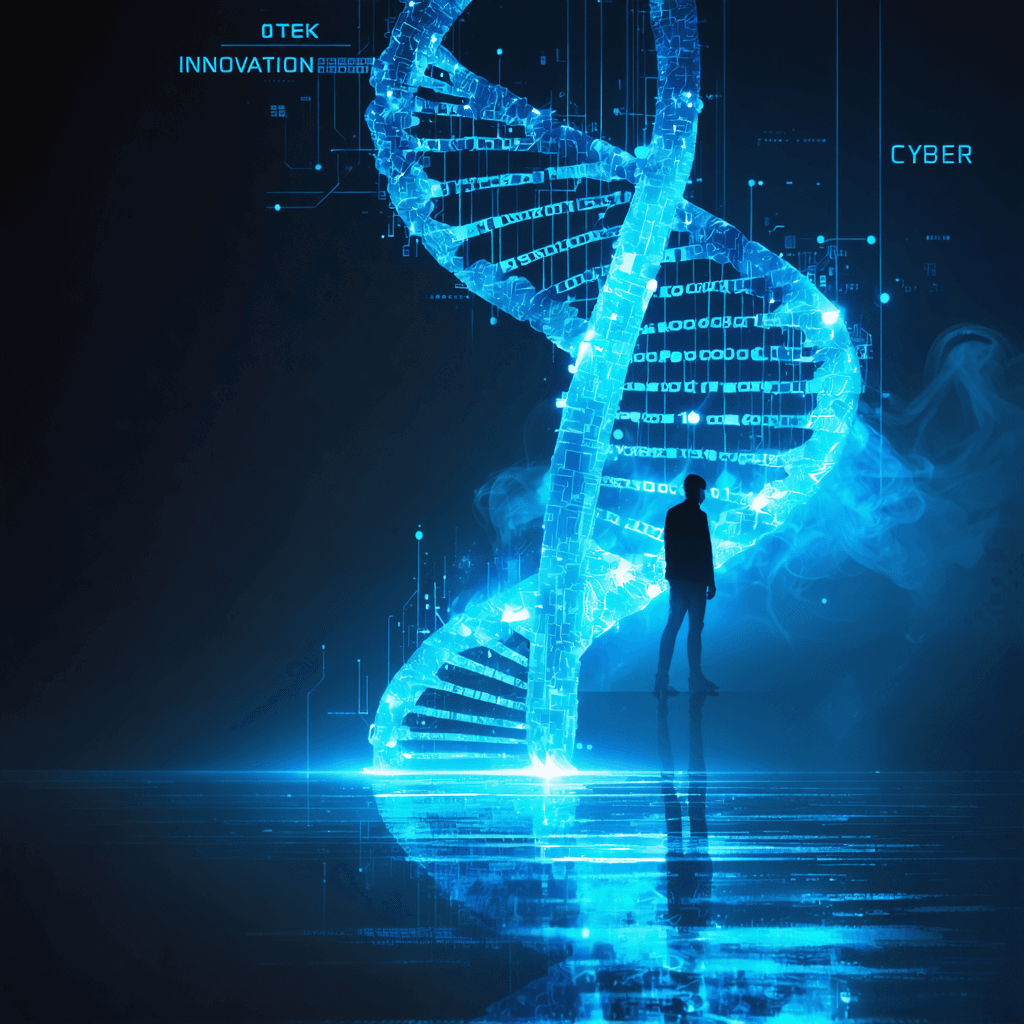Hackers vs. Innovation: How Disruptive Tech is Reshaping Cybersecurity's DNA
In the ever-evolving landscape of digital security, the battle between hackers and innovators has reached unprecedented levels of sophistication. As we navigate through 2025, the intersection of disruptive technologies and cybersecurity presents both extraordinary opportunities and complex challenges that are fundamentally reshaping the industry's DNA.
The AI Revolution in Cybersecurity
Artificial Intelligence has emerged as a double-edged sword in the cybersecurity realm. While AI-powered systems are now capable of detecting and responding to threats in real-time, malicious actors are equally leveraging these technologies to create more sophisticated attack vectors. According to the World Economic Forum's 2025 Global Cybersecurity Outlook, organizations are increasingly adopting AI-driven security solutions to combat evolving threats.
Key developments include:
- Advanced threat detection systems using machine learning
- Automated incident response capabilities
- Predictive security analytics
- AI-powered vulnerability assessment tools
Quantum Computing: The Next Frontier
The advent of quantum computing presents both a promise and a threat to current cybersecurity paradigms. As quantum capabilities advance, traditional encryption methods face unprecedented challenges. Industry leaders are racing to develop quantum-resistant cryptography to protect against future quantum attacks.
Critical Areas of Impact:
- Post-quantum cryptography development
- Quantum key distribution systems
- Quantum-safe algorithms
- Legacy system vulnerabilities
Blockchain and Distributed Security
Blockchain technology continues to revolutionize how we approach data integrity and security. In 2025, we're seeing increased adoption of blockchain-based solutions across various security applications:
- Decentralized identity management
- Secure supply chain verification
- Immutable audit trails
- Zero-trust architecture implementation
The Human Element: Security Culture Evolution
Despite technological advances, the human factor remains crucial in cybersecurity. Organizations are investing heavily in:
- Advanced security awareness training
- Gamified learning platforms
- Real-time threat simulation exercises
- Cultural transformation initiatives
Emerging Threat Landscape
Recent data from Gartner's Strategic Technology Trends highlights several critical areas of concern:
Modern Attack Vectors:
- Supply chain compromises
- Advanced persistent threats (APTs)
- IoT vulnerability exploitation
- Social engineering 2.0
Innovation-Driven Defense Strategies

Organizations are adopting multi-layered defense strategies that leverage cutting-edge innovations:
Zero Trust Architecture
- Continuous verification
- Least privilege access
- Micro-segmentation
Extended Detection and Response (XDR)
- Integrated security platforms
- Automated response mechanisms
- Cross-platform threat correlation
Cloud-Native Security
- Container security
- Serverless security
- API protection
The Role of Regulatory Compliance
As technology evolves, regulatory frameworks are adapting to address new security challenges. Organizations must navigate:
- Updated data protection requirements
- Cross-border data regulations
- Industry-specific compliance standards
- Privacy-preserving computation requirements
Future-Proofing Security Operations
To stay ahead of threats, organizations are focusing on:
Adaptive Security Architecture
- Dynamic risk assessment
- Continuous monitoring
- Automated response capabilities
Skills Development
- Hybrid security teams
- AI-security specialists
- Quantum computing experts
Collaborative Defense
- Threat intelligence sharing
- Industry partnerships
- Public-private cooperation
Practical Steps for Organizations
- Conduct regular security assessments
- Invest in emerging technology training
- Develop incident response plans
- Foster a security-first culture
- Maintain updated security frameworks
The Path Forward
The future of cybersecurity lies in the ability to harness innovative technologies while maintaining robust defense mechanisms. Organizations must remain agile and adaptable, continuously evolving their security posture to match the pace of technological advancement.
Ready to enhance your cybersecurity expertise? Explore our comprehensive courses and resources at 01TEK. From AI security to quantum computing principles, we offer cutting-edge training to prepare you for tomorrow's security challenges. Visit 01TEK Today to begin your journey toward cybersecurity excellence.
Sources: 1. World Economic Forum Global Cybersecurity Outlook 2025 2. Gartner Strategic Technology Trends 2025 3. McKinsey Technology Trends Outlook 4. PwC Essential Eight Technologies 5. Berkeley Cybersecurity Job Market Trends
If plan ‘A’ fails
remember you have 25 letters left.”




